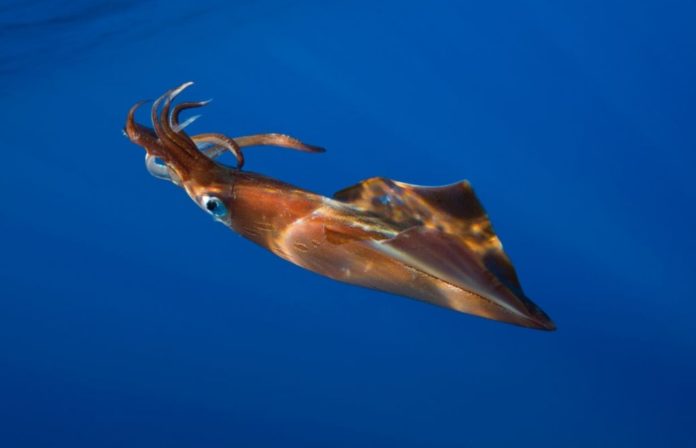A team of scientists, for the first time, have captured the giant squid one of the most elusive creatures in the ocean while hunting.
With the help of specialist equipment to film at the crushing depth of 2,500 feet below the surface, marine biologists captured the Architeuthis dux squid hunting in the wild.
The marine biologists used a decoy instead of actual prey so they could tease the mysterious creature out of the depths.
And while this footage was captured back in 2019, it’s only now been released to the public.
- Brief Anger Hampers Blood Vessel Function Leading to Increased Risk of Heart Disease and Stroke – New Study
- New Blood Test Pinpoints Future Stroke Risk – Study Identifies Inflammatory Molecules as Key Biomarker
- Enceladus: A Potential Haven for Extraterrestrial Life in its Hidden Ocean Depths
- New Experiment: Dark Matter Is Not As ‘DARK’ As All We Think
- Scientists in Fear of This New Predator From Red Sea Eating Native Species in Mediterranean
Scientists has assumed the squid waited to ambush prey, but the video shows it stalks the decoy – known as E-Jelly – before going in for the kill.
The giant squid has been known to grow up to 40 feet long and although we have very little evidence of how they live, dead specimens have occasionally washed up on beaches around the world.
Squids are the basis for a lot of maritime myth and legend, including the famous kraken from pirate stories.
Living more than half a mile below the surface means any evidence we have of giant squids has to be captured by specially-built remote submersibles.
In this case, the squid was picked up by an underwater camera system called Medusa. Medusa uses a red light system, which deep-dwelling creatures can’t see as well – so the team can watch them without disturbing them.
The E-Jelly mimics the bioluminescence of jellyfish and attracts creatures in the deep water beyond the sun’s reach.
The team were conducting a mission titled ‘Journey into Midnight’ which involved exploring parts of the Gulf of Mexico below 3,800 feet, known as the bathypelagic – or midnight – zone.
We knew immediately that it was a squid. It was also big, but because it was coming straight at the camera, it was impossible to tell exactly how big. But big – at least 3 to 3.7 meters (10 to 12 feet) long.
Duke University Professor Sonke Johnsen and Ocean Research & Conservation Association CEO Edie Widder said in a blog post.
This suggests that the animal does not like the bright lights of ROVs and that stealth monitoring of the sort possible with the Medusa can allow us to see what has never been seen before.
they wrote.
Image Credit: Getty
